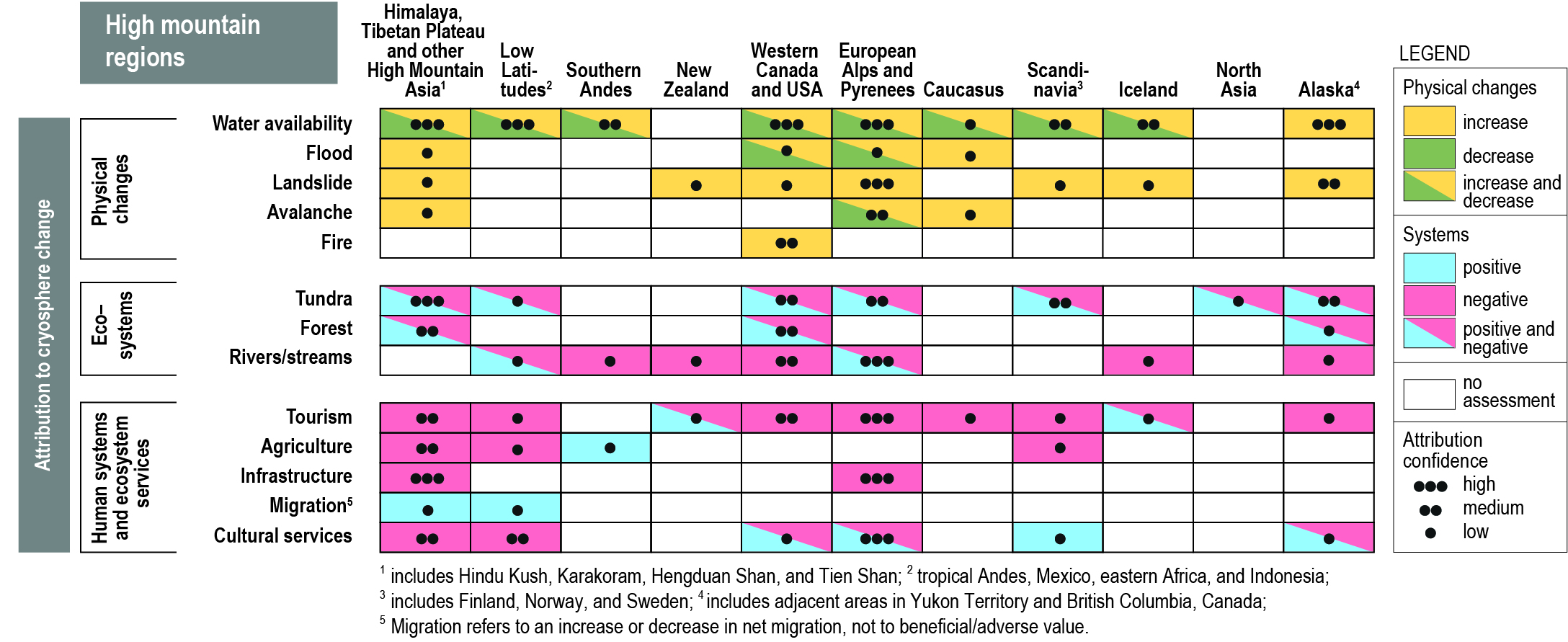
Figure 2.8
Figure 2.8 | Synthesis of observed physical changes and impacts on ecosystems and human systems and ecosystems services in eleven high mountain regions over past decades that can at least partly be attributed to changes in the cryosphere. Only observations documented in the scientific literature are shown, but impacts may also be experienced elsewhere. For physical changes yellow/green refers to an increase/decrease, respectively, in amount or frequency of the measured variable. For impacts on ecosystems and human systems and ecosystems services blue or red depicts whether an observed impact is positive (beneficial) or negative (adverse). Cells assigned ‘increase and decrease’ indicate that within that region both increase and decrease of physical changes are found, but are not necessarily equal; the same holds for cells showing ‘positive and negative’ impacts. Confidence levels refer to confidence in attribution to cryospheric changes. No assessment means: not applicable, not assessed at regional scale, or the evidence is insufficient for assessment. Tundra refers to tundra and alpine meadows. Migration refers to an increase and decrease in net migration, not beneficial/adverse value. Impacts on tourism refer to the operating conditions for the tourism sector. Cultural services include cultural identity, sense of home, intrinsic and aesthetic values, as well as contributions from glacier archaeology. Figure is based on observed impacts listed in Table SM2.11.